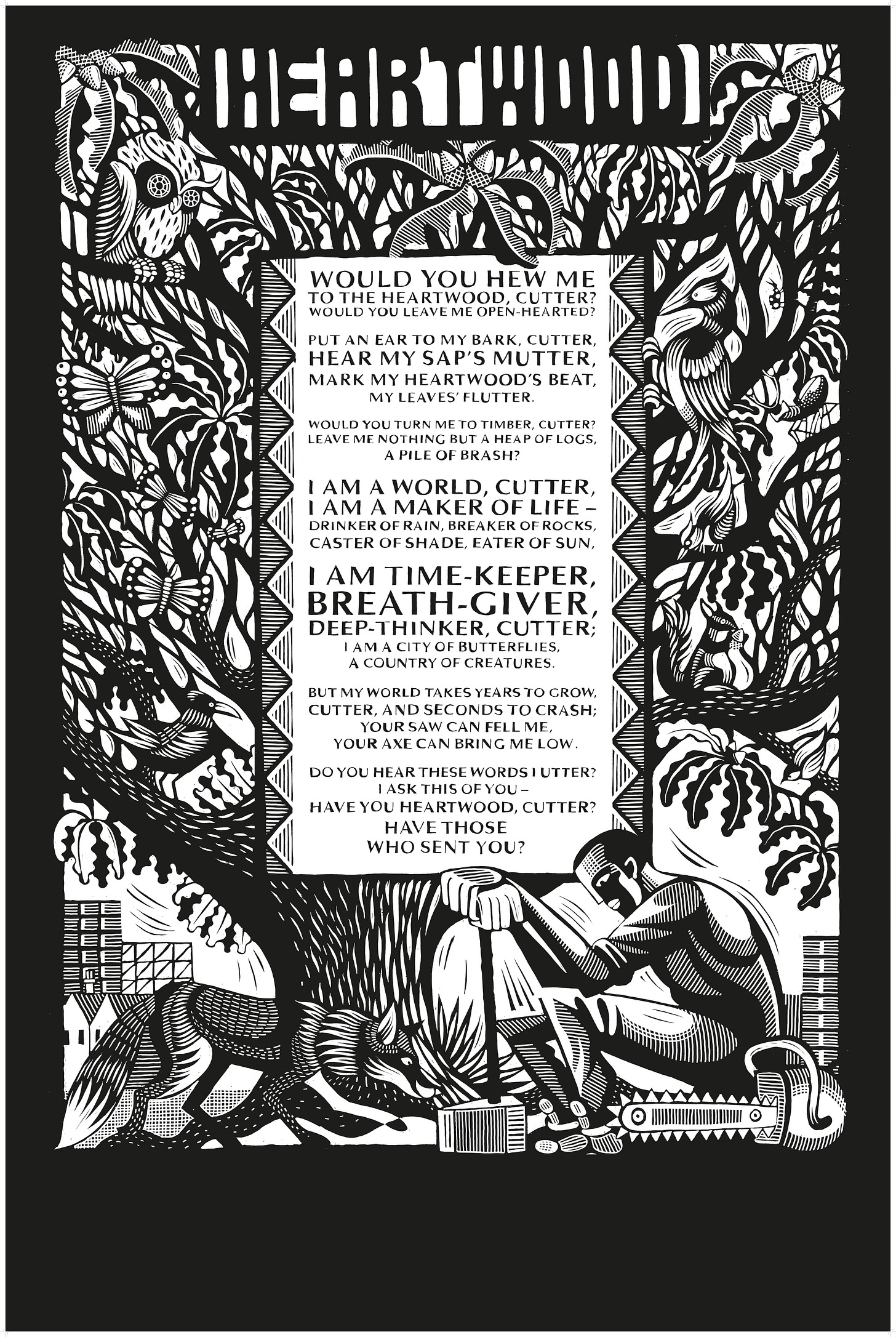When people think about trees, they often think about trees in woodland, forests and the countryside. Yet it is often urban trees that most people have a connection with on a day-to-day basis. In To Hear the Trees Speak, I wanted to include an urban tree because of the importance they play in towns and cities and in our lives in these spaces.
Despite their importance, they are also frequently overlooked, taken for granted and often under threat from city authorities. This was the case in Sheffield, where 17,500 street trees were targeted for removal, including the Vernon Oak, a 150-year-old oak tree. The courage of the tree protectors, who often had never taken part in any kind of protest before, but felt such a strong bond to the trees, was quite extraordinary.
Urban trees have been in the news again this week. A 500-year-old oak tree in Enfield, London was felled, provoking an outpouring of anger and sadness.
One resident, Sam Gracie Tillbrook, was quoted as saying: “This ancient oak is monumental; visiting it in person, it feels wise, having witnessed so much over its lifespan of up to 500 years. I can't imagine what type of person would decimate a tree like this…I feel overwhelmingly sad and angry.”
This sentiment echoed the sentiments of the tree protectors I spoke to in Sheffield. People have a deep affection and appreciation for, and connection to trees which they know and love. In this case, it wasn’t the Council that ordered the felling of the tree but the owner of a neighbouring restaurant that leased the land from the Council.
Sam and other interviewees also made the point about how the oak tree supports large numbers of other species, which means that these beings have also lost their home.
I think of the words that Robert Macfarlane wrote for the Sheffield trees in his protest poem, Heartwood. “Have you heartwood cutter? Have those who sent you?” The poem was made into disks and hung from trees as a ‘charm from harm.’
The artist Nick Hayes designed a poster version of the poem, and Robert and Nick have generously made it available for people to download and share. You can download your copy here.
Three recommendations
In my book, I take a look at some of the many benefits of urban trees, including on health and wellbeing. The tree equity score is one way of analysing the coverage of trees in urban areas and which areas would benefit from greater investment. You can find the score for your local area both in the UK and in the US.
I’m looking forward to Paul Wood’s new book, Tree Hunting, about 1,000 trees to find in Britain’s and Ireland’s cities. I recommend following his Substack, The Street Tree, where he shares pictures and stories of urban trees.
There is also the upcoming Urban Tree Festival, taking place from 10-18 May in London, across the UK and online. Do check out the programme.

Prompt for this week:
In a town you live in or are visiting, take a walk with the intention to pay attention to the street trees. Where are they planted? How old are they? Do they look healthy? What kind of trees are they? What do they contribute to the street? What would be lost if they were felled? If you can’t see any street trees, think about where they could be planted and what they would add. Feel free to share any thoughts here.






